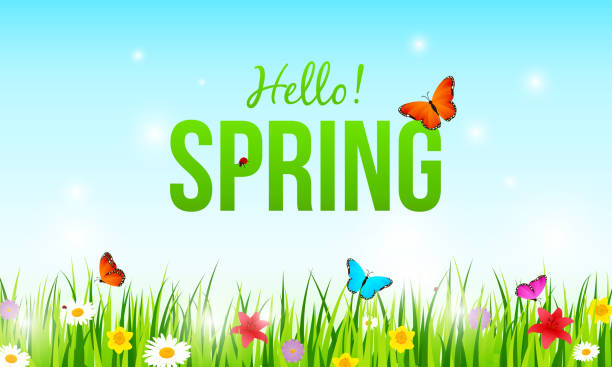How To Describe Betrayal In Writing (15 Best Tips-2024)
How To Describe Betrayal In Writing
How To Describe Betrayal In Writing: Describing betrayal in writing is an art that goes beyond mere storytelling; it’s a journey into the depths of human emotions and the intricate labyrinth of trust and deceit.
Betrayal is a universal theme that resonates with readers because it reflects the complexities of human relationships, motives, and the profound impact of broken trust.
In this craft, the writer becomes a conductor, orchestrating the symphony of emotions, choices, and consequences that follow an act of betrayal.
This guide explores the multifaceted facets of betrayal in writing, from the character development that lays the foundation, to the setting that amplifies its impact, the tension that underscores its significance, and the consequences that ripple through the narrative.
As we delve into the intricate layers of this emotional landscape, we’ll discover the keys to crafting betrayal narratives that captivate and haunt readers long after the final page is turned.
How To Describe Betrayal In Writing
Describing betrayal in writing involves creating a compelling narrative that effectively conveys the emotional impact and complexity of betrayal. Here’s a step-by-step process on How To Describe Betrayal In Writing:
Understand Betrayal
Before you can describe it, you need to grasp what betrayal means. It’s the violation of trust or confidence. Understand the nuances of the betrayal you’re portraying: is it personal, professional, romantic, or a different kind?
Character Development
Create well-rounded characters involved in the betrayal. Develop their motivations, backgrounds, and relationships with one another. This will make the betrayal more meaningful.
Foreshadowing
Build anticipation by dropping subtle hints and foreshadowing the impending betrayal. This keeps the reader engaged and invested in the story.
Emotional Buildup
Take time to develop the emotional context surrounding the betrayal. Describe the trust, loyalty, and love that exist between the characters involved.
Betrayal Scene
Describe the betrayal itself. This is the turning point of your story. Be vivid and specific in detailing the actions, words, or events that constitute the betrayal.
Character Reactions
Show the immediate reactions of both the betrayer and the betrayed. Express their shock, anger, sadness, or confusion through their thoughts, words, and actions.
Internal Monologue
Allow the reader to delve into the characters’ minds. Describe their inner turmoil, thoughts, and justifications for their actions.
Consequences
Explore the aftermath of the betrayal. Show how it affects the characters’ relationships, emotions, and lives. This can be a source of tension and conflict.
Symbolism and Imagery
Use symbolism and vivid imagery to reinforce the impact of the betrayal. Symbolic elements can help convey the depth of the betrayal’s significance.
Dialogue and Conflict
Use dialogue to highlight the tension and conflict that arises from the betrayal. Show characters confronting each other or struggling to come to terms with what happened.
Resolution or Redemption
Decide how the story will ultimately unfold. Will there be resolution, forgiveness, or continued conflict? This choice will shape the overall message of your writing.
Edit and Polish
Review your writing for clarity and emotional resonance. Make sure the descriptions are powerful and concise, and that the pacing of the narrative flows effectively.
Seek Feedback
Share your writing with others to get feedback on how well you’ve portrayed the betrayal. Make necessary revisions based on their input.
Empathy and Realism
To make the portrayal of betrayal compelling, strive to understand the emotions involved and convey them realistically. This will help readers connect with the characters and their experiences.
Conclusion
Summarize the impact of the betrayal on the characters and the overall message or theme of your story.
Remember that effective storytelling is not just about describing events but also about creating a powerful emotional connection between the reader and the characters. Betrayal is a potent theme, and by following these steps, you can craft a narrative that resonates with your readers and elicits their empathy and understanding.

Understanding Betrayal
Understanding betrayal is like navigating a treacherous labyrinth of human emotions and motivations.
It’s a complex dance between trust and deception, loyalty and treachery. Betrayal isn’t a mere plot twist; it’s a seismic shift that shatters the very foundation of relationships and identities. It’s the whispered secrets and veiled intentions, the knife in the back when you least expect it.
4To truly comprehend betrayal is to peer into the depths of the human soul, where the darkest shadows cast their haunting silhouettes.
It’s an exploration of the gray areas of morality and the uncharted territories of the human psyche. Unraveling the enigma of betrayal is a writer’s invitation to dive headfirst into the tumultuous sea of emotions, and to craft stories that resonate with the universal ache of betrayal’s sting.
Character Development
Character development is the art of breathing life into the ink and paper or the digital bits that form the essence of your story. It’s the alchemy that transforms two-dimensional words into three-dimensional souls, evoking empathy, admiration, or even repulsion in your readers.
Like a sculptor chiseling a block of marble, it’s about revealing the layers of your character, one chip at a time, until you expose their raw, beating heart.
As a writer, you don the role of a celestial puppeteer, orchestrating the intricacies of their past, present, and future, and watching as they evolve into someone not just relatable, but real.
Character development is your secret incantation to summon characters who step off the page and into the reader’s world, leaving an indelible mark on their imagination.
Developing the betrayed character
Developing the betrayed character is like nurturing a fragile flame within a tempest. It involves delving deep into the emotional wreckage left in the wake of betrayal, peeling back the layers of trust, and revealing the visceral scars of broken faith.
As a writer, you must infuse this character with raw vulnerability, letting the reader feel the weight of their shattered expectations.
Their journey becomes a crucible where resilience and resilience are tested, and they must navigate the labyrinthine maze of forgiveness, revenge, or self-discovery.
With each carefully crafted word, you breathe life into their anguish and resilience, ensuring that the reader not only empathizes with their plight but also joins them on a transformative odyssey of self-discovery and healing.
Setting the Stage
Setting the stage is akin to weaving the tapestry of your story’s world, a place where the ordinary becomes extraordinary and the mundane transforms into magic.
It’s not just about geographical coordinates or historical context; it’s the canvas upon which your characters dance, love, or struggle.
Whether you’re navigating the neon-lit alleyways of a cyberpunk metropolis or the quiet cobblestone streets of a medieval village, it’s the setting that breathes life into your narrative.
Like an architect of dreams, you design the backdrop against which your characters’ hopes and fears unfold. Every detail is a brushstroke on the canvas, creating an immersive world that readers can taste, touch, and breathe.
Setting the stage is the gateway to a realm where the ordinary rules of reality yield to the boundless realms of your imagination, where your story is no longer a mere plot but a breathtaking journey through a world yet to be explored.

Creating a believable world
Creating a believable world is the bedrock of immersive storytelling. It’s the alchemy of merging the fantastical with the tangible, crafting a realm that feels not just real but almost touchable.
As a writer, you’re the world’s architect, designing every facet, from the geography and climate to the intricacies of culture and society. It’s about the rules that govern the supernatural and the subtle nuances of human behavior.
A believable world is a living, breathing organism, rich with history, conflict, and wonder. Readers should step into it and feel the dirt beneath their feet, breathe its air, and understand its people as though they were neighbors.
The success of your story often hinges on your ability to make this world more than a backdrop; it must be a character in its own right, a world so compelling that readers can’t help but lose themselves within its embrace.
Building Tension
Building tension is akin to orchestrating a symphony of emotions, a delicate balance of suspense, anticipation, and unease.
It’s the writer’s craft of weaving invisible threads that tether the reader to the precipice of the unknown. Tension isn’t just a tool; it’s the heartbeat of a gripping narrative.
It’s the rapid drumming of hearts in a moonless forest, the echoing footfalls in an abandoned corridor, the subtle glance laden with unspoken words.
As a writer, you become a puppeteer, manipulating the reader’s breath, their heartbeats racing in tune with the plot’s crescendo.
It’s not just the fear of what’s lurking in the shadows, but the irresistible urge to peek behind the curtain and discover the secrets that beckon.
Building tension is the art of making the ordinary feel ominous and the silence deafening, leaving readers teetering on the edge, yearning for resolution, yet dreading the journey’s end.

Use of conflict
The use of conflict in storytelling is akin to a blazing crucible in which characters are tested, transformed, and ultimately defined.
It’s the engine that propels a narrative forward, a relentless storm that the characters must navigate. Conflict is more than just a clash of opposing forces; it’s the revelation of character, the catalyst for growth, and the crucible in which heroes are forged.
It can manifest as internal strife, external obstacles, moral dilemmas, or the tumultuous clash of ideologies.
As a storyteller, you become the master of discord, weaving the intricate web of challenges and obstacles that your characters must grapple with, and it’s through these trials that the most profound and compelling stories emerge.
Conflict is the heartbeat of drama, the fuel that ignites the reader’s emotions, and the spark that illuminates the path of your characters’ journey.
Suspense and pacing
Suspense and pacing are the twin architects of reader engagement, the rhythmic heartbeat that drives a story from its opening notes to its crescendo.
Like a skilled conductor, a writer orchestrates the ebb and flow of tension, ensuring that readers are constantly teetering on the edge of their seats.
Suspense isn’t merely the fear of the unknown; it’s the art of skillfully revealing and withholding information, allowing the reader just enough to ignite their curiosity.
Pacing, on the other hand, is the tempo of the narrative, the speed at which events unfold, and the strategic pauses that provide respite or amplify intensity.
It’s in the delicate balance between suspense and pacing that stories breathe, creating a symphony of emotions that keeps readers immersed, turning pages well into the night, desperate to uncover the next piece of the puzzle.
These elements, when masterfully intertwined, create a magnetic pull, urging readers onward through the labyrinth of the plot, and ensuring that the story lingers in their thoughts long after the final page is turned.
Describing the Betrayal
Describing betrayal is akin to navigating a treacherous minefield of shattered trust and festering wounds. It’s a writer’s alchemical task, transforming ink and paper into the raw, searing pain that can only be born from a broken covenant.
It’s about unveiling the fragile façade of loyalty and the jagged edges of deceit, as well as the haunting echo of whispered promises now turned to dust.
Describing betrayal is not just a storytelling device; it’s an excavation of the human heart, a journey into the depths of love gone awry, and a collision of emotions so potent that they can unravel the most tightly woven of narratives.
With each word, you must summon the anguish, the shock, the irreparable rift between souls, and cast them onto the page like shards of shattered glass.
Betrayal isn’t just an event; it’s a visceral experience, and it’s the writer’s craft to ensure that every reader feels it deep in their core, leaving an indelible mark that lingers long after the final sentence.

Emotions and reactions
Emotions and reactions are the lifeblood of storytelling, the invisible currents that electrify the pages of a narrative.
They are the bridge that connects characters and readers, making the written word transcend into a visceral experience. Emotions are the colors with which we paint our characters, each stroke revealing their innermost desires, fears, and vulnerabilities.
Reactions are the ripple effect, the way a character responds to the events that transpire, laying bare their true nature.
As a writer, you wield the power to evoke empathy, provoke tears, or elicit laughter through your characters’ emotional journeys.
Every word, every gesture, every quiver of a lip, is a brushstroke in the portrait of your narrative, inviting readers to not just observe, but to intimately feel the joys, sorrows, and passions of your characters as if they were their own.
In the dance of emotions and reactions, the magic of storytelling unfolds, leaving readers forever changed by the connection they’ve formed with the characters and the journey they’ve taken together.
Dialogue and Conflict
Dialogue and conflict are the dynamic duet that choreographs the ballet of words on the stage of storytelling. They are the verbal jousting, the whispered secrets, and the thunderous confrontations that bring characters to life.
Dialogue isn’t merely a conversation; it’s the clash of egos, the exchange of veiled intentions, and the mirror reflecting the innermost desires and vulnerabilities of your characters.
Conflict is the catalyst, the spark that ignites these conversations into a roaring fire, driving the narrative forward with the relentless force of opposing wills.
Together, they create the pulse of your story, the push and pull that keeps readers on the edge of their seats, yearning for resolution, and entranced by the intricate dance of words that reveals the complex interplay of human emotions and ambitions.
In the marriage of dialogue and conflict, writers become conductors of symphonies, orchestrating the harmonious melodies and dissonant chords that define the characters’ journeys and the plot’s crescendo.
Conversations leading to betrayal
Conversations leading to betrayal are like a clandestine tango, a subtle dance where every word and gesture hides a deeper, sinister purpose.
These dialogues are a web of half-truths and veiled intentions, a stage where characters wear masks of loyalty while secretly wielding the daggers of deception.
They are the whispered promises and false reassurances that set the stage for the ultimate act of treachery, drawing the reader into a thrilling labyrinth of trust and doubt.
As a writer, you become the puppet master, pulling the strings of conversation, infusing each exchange with tension and subtext.
The real drama isn’t always in the betrayal itself, but in the moments leading up to it, as you craft a delicate narrative dance that keeps the reader’s heart racing and their imagination captivated, making them unwitting accomplices in the unfolding drama.
Consequences and Impact
Consequences and impact are the heavy anchors that tether a story to the reader’s heart long after the final page has been turned.
They are the ripples that spread through the narrative like echoes in a canyon, the aftershocks of choices made and destinies fulfilled.
Like an alchemist, a writer transforms ink into the tangible weight of characters’ decisions, allowing readers to witness the cascading effects of betrayal, love, or sacrifice.
It’s not just about what happens; it’s about the profound transformation these events instigate, both within the characters and the world they inhabit.
These consequences and impacts are the haunting echoes of actions taken and roads not traveled, evoking introspection and lingering emotion in readers, reminding them that the stories they’ve ventured through are not merely words on a page but mirrors reflecting the complexities of life and the human experience.
Immediate aftermath
The immediate aftermath is the moment when the narrative’s pulse quickens, and the reader’s heart pounds in unison with the characters’.
It’s the raw, unfiltered response to the pivotal moments that have unfolded, a time when emotions are unshackled and decisions are made in the crucible of intense events.
Whether it’s the frenzied aftermath of a battle, a startling revelation, or a heartbreaking betrayal, this is the juncture where characters confront the chaotic aftermath of their choices.
The immediate aftermath offers a rare glimpse into the characters’ true natures, revealing how they cope with adversity, handle loss, or grapple with newfound knowledge.
It’s a testament to the writer’s craft, capturing the characters’ emotional turmoil and unearthing the seeds of future conflicts, offering the reader a tantalizing taste of what lies ahead in the narrative’s unpredictable journey.
Betrayed character’s choices
The betrayed character’s choices in the wake of deception are like the ripples of a stone cast into a tranquil pond, each decision resonating far beyond their initial impact.
These choices are a crucible where the character’s true strength and resilience are tested. Will they seek revenge, strive for redemption, or retreat into the shelter of solitude? The path they choose is not only a reflection of their personality but a compass guiding the narrative’s trajectory.
As a writer, you must carefully craft these decisions, allowing readers to witness the complex interplay of emotions and logic, as the character navigates the treacherous waters of betrayal.
These choices are not just waypoints in the story but windows into the character’s soul, revealing the depth of their inner conflict, and propelling the narrative toward its ultimate resolution.

Betrayer’s reactions
The betrayer’s reactions, in the aftermath of their actions, are a complex brew of emotions that paint a vivid portrait of their character.
Whether it’s guilt gnawing at their conscience, a defiant stand behind their betrayal, or the torment of keeping their dark secret hidden, these reactions are the cracks in the facade that reveal their inner turmoil.
A skilled writer delves into the betrayer’s psyche, unearthing the layers of justification, fear, or remorse that underpin their reactions.
These responses are a key to understanding their motivations, their evolution, and their potential for redemption or further descent into darkness.
The betrayer’s reactions add depth to the narrative, serving as a mirror that reflects not only their own inner demons but also the consequences they must face in the relentless march of the story.
Reader Engagement
Reader engagement is the sacred dance between storyteller and audience, where words on a page transform into vivid, immersive worlds that pull readers into a breathtaking vortex of emotions and ideas.
It’s a whispered invitation to embark on a journey, a pact of shared emotions, where the writer casts the spell, and the reader willingly becomes entranced. In the alchemical exchange of imagination, words become sensations, characters become confidants, and worlds become real.
The secret lies not just in crafting a narrative, but in weaving a connection between writer and reader that transcends the boundaries of time and space.
Reader engagement is the art of turning literature into a portal, through which readers can escape, learn, and explore, leaving their world behind for just a little while and venturing into the rich tapestry of human experience that fiction so brilliantly offers.
It’s the magic that keeps the reader turning page after page, because in those pages, they don’t just find stories—they find pieces of themselves and the world they yearn to explore.
Frequently Asked Questions (FAQ) about How To Describe Betrayal In Writing
What is the key to effectively describing betrayal in writing?
The key is to create a compelling narrative by developing well-rounded characters, using foreshadowing, vividly portraying the betrayal scene, and delving into the emotional aftermath.
How can I make readers connect with the characters experiencing betrayal?
You can achieve this by providing insights into the characters’ thoughts, emotions, and motivations, allowing readers to empathize with their experiences.
Is it necessary to foreshadow the betrayal in my story?
While not mandatory, foreshadowing can build anticipation and make the betrayal more impactful. It keeps readers engaged and invested in the narrative.
What role does symbolism and imagery play in describing betrayal?
Symbolism and vivid imagery can enhance the depth of the betrayal’s significance and emotional impact, making your writing more powerful.
How do I strike a balance between describing the betrayal scene and the emotional aftermath?
Focus on creating a well-paced narrative. Spend enough time on both elements to maintain the emotional tension without rushing through the story.
What should I consider when deciding on the consequences of betrayal in my story?
Think about the theme and message you want to convey. Consider whether there will be resolution, redemption, or continued conflict, and how it aligns with your story’s purpose.
Is it important to seek feedback on my writing about betrayal?
Yes, seeking feedback from others can help you refine and improve your portrayal of betrayal, ensuring that it resonates with your readers.
How can I make the betrayal in my story unique and memorable?
Personalize the betrayal to the characters and their relationships, and consider incorporating unexpected twists or elements that set your story apart from others.
Should I include inner monologues of the characters experiencing betrayal?
Yes, delving into the characters’ inner thoughts and struggles can provide depth and authenticity to the portrayal of betrayal.
What is the most common mistake writers make when describing betrayal in their stories?
One common mistake is being too explicit or heavy-handed with the portrayal, which can come across as melodramatic. Effective storytelling often relies on subtlety and nuance.
Conclusion
In the conclusion of How To Describe Betrayal In Writing, the skill of describing betrayal is a precious thread, weaving its way through the hearts and minds of readers.
Betrayal is not merely a plot device; it’s a mirror reflecting the spectrum of human frailty, trust, and moral complexity. As we conclude our exploration of how to describe betrayal in writing, it becomes evident that this is an endeavor of profound depth and resonance.
The betrayal narratives that linger in our memories are those that stir our emotions, challenge our moral compass, and evoke empathy for characters grappling with the shadows of deceit.
Through the careful crafting of characters, settings, dialogues, and consequences, writers have the power to create stories that not only captivate but also provoke reflection on the intricate dance between trust and treachery.
In this pursuit, we, as storytellers, become not just chroniclers of human experiences, but also conjurers of emotions and moral dilemmas that continue to resonate long after the final page, reminding us that in the realm of betrayal, the power of the written word is truly transformative.






